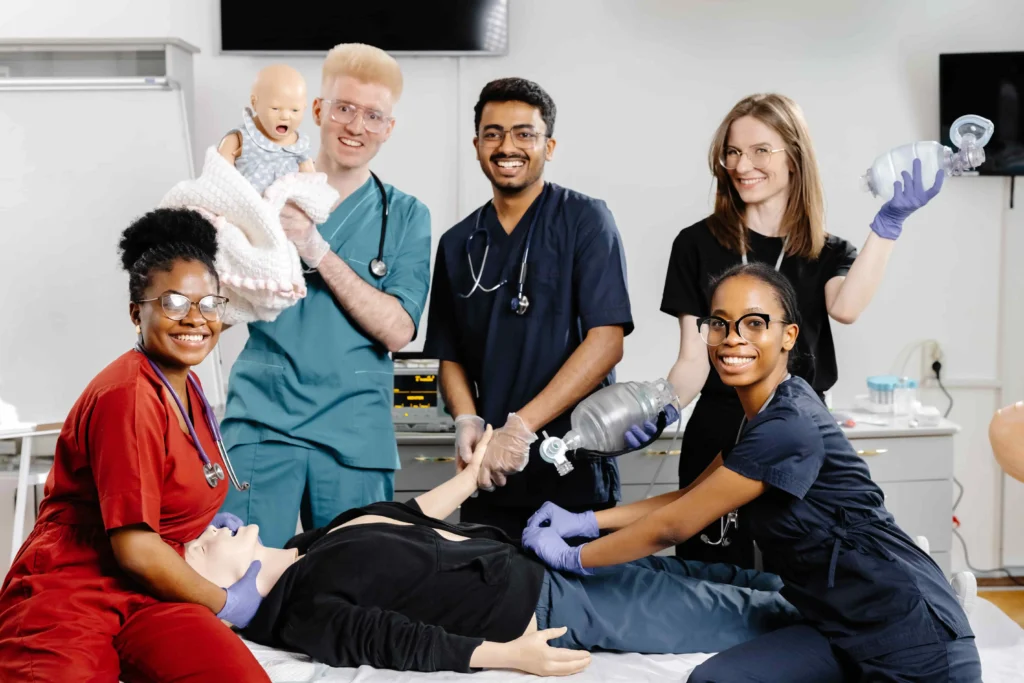INTRODUCTION TO PRACTICAL NURSING

Practical nursing is a profession related to healthcare that concentrates on delivering basic nursing care under the administration of registered nurses (RNs) and doctors. It is also known as licensed practical nursing (LPN) . LPNs often work in clinics, nursing homes, hospitals, and home health care entities, among additional medical establishments.They provide basic and specialised medical care to a diverse range of patients. To become a practical nurse one usually requires the completion of a formal school program that lasts anywhere from one to two years depending on the region and educational institution. Eligible LPNs need to pass a license exam in order to be certified to practice after completing their educational requirements. History Of Practical Nursing Practical nursing has a great history that gives consideration to evolving health care and nursing settings. Early nursing practices included mainly women that handled the informal nursing practices in their local settings and homes. It basically includes providing caregiver duties like providing relaxation to the sick, fulfilling daily activities and aiding in hygienic care. During the mid 19th century known as nightingale’s era there was a need for trained nurses who could deliver proper care and have proficient skills. The importance of hygiene, sanitation, and proper nursing education was highlighted in this era. Healthcare needs began to rise in the 19th and early 20th century so requirements for proper healthcare settings were elevated. Basic nursing care under the supervision of registered nurses was the demand. Practical nursing education programs were initiated in the early 20’s. Many women worked as practical nurses during the war era and gained valuable experience in the field. With time practical nursing became a recognized profession. licensing and certification was initiated to make sure that practical nursing fulfils educational standards. There was a growth in the role and responsibilities of practical nurses including providing direct care, carrying out wound care activities, and educating patients and families. Guidelines for becoming a practical nurse If you are planning to work as an LPN, there are some requirements that are needed to be completed. After completing your accredited training program you will be eligible to take an exam and obtain your LPN license depending upon your state or region. Obtaining a license is necessary to work as an LPN. The following actions can be taken in order to become an LPN: 1- Fulfil requirements for training and education : Your formal school program must be completed. Several technical educational institutions provide LPN training courses. It typically takes one to two years according to your state or region requirements . You need to finish your school education or its equivalent, pass the program’s enrollment exam, and enroll in an accredited LPN training program. This program provides knowledge on various subjects as well, such as biology, anatomy, physiology, psychology, pharmacology, etc. These programs also provide experience to work in hospitals and clinics. These training courses make sure that students have practical expertise in order to provide a strong basis for nursing practice. 2- Obtain certificates and license: Once your LPN training is completed, your certification is awarded. But you still need to complete your license examination to work as an LPN. The national licensing test for practical nursing (NCLEX-PN) is supervised by the National Council of State Boards of Nursing (NCSBN). Passing the exam allows you to obtain your license and work as an LPN. 3- Think about how to progress in the industry After earning a degree in practical nursing gaining experience in the field and pursuing certifications you can demonstrate your skills and expertise in the field. SIGNIFICANCE: Practical nursing is an important part of providing health care services in a healthcare setting. Assisting registered nurses and doctors: Licensed practical nurses LPNs helps registered nurses and doctors in providing quality treatments to the patients in hospitals, nursing homes and other healthcare institutions. LPN’s provide primary care to the patients. Therefore, making sure the patient’s safety and comfort is their main task. Attainable care: LPN’s provide hands-on care to the patients and they stand as frontliners in providing healthcare services. Focused attention: LPN’s spend significant time with their patients and provide individualised care to the patients and build strong relationships with the patients that can bring speedy recovery of the patients. ROLE OF LPN’S: LPN’s plays significant role in taking care of the patient: Monitoring vital signs Generating assessment on patients Helping patients in doing basic activities Assisting physicians Maintaining patient documentation CAREER OUTLOOK: The career outlook for licensed practical nursing LPN’s is generally positive. There are few aspects that influence career outlook for LPN’S such as growing population as population ages there is an increase in the demand of more healthcare services. Chronic conditions like diabetes, heart issues are increasing and demand for LPN’s is also rising. There are a variety of work environments such as nursing homes, hospitals, different health care settings providing more job opportunities. When considering this profession, LPN’s with their interest and goals should also be mindful of physical and emotional responsibility of this role.
